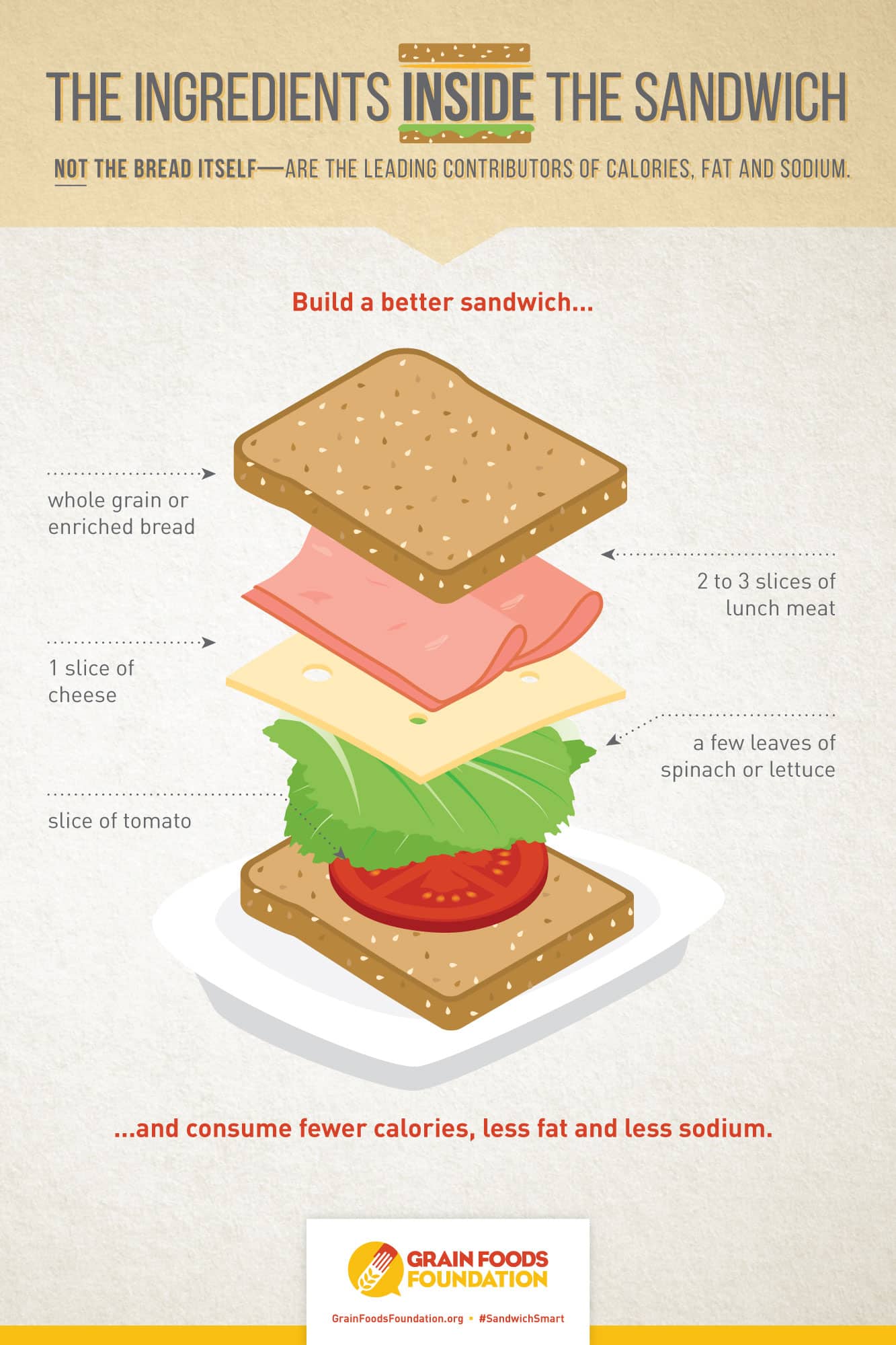The Power of the Sandwich
It’s been around since the 1700’s, and it is still packs a healthy and convenient punch for Americans. According to historians, the invention of the sandwich is attributed to John Montagu, 4th Earl of Sandwich (1718-1792), a British statesman who enjoyed a good game of cards and didn’t want to leave his gaming table to eat. After witnessing the Greeks and Turks in the Eastern Mediterranean eating grilled pitas and canapes, he employed the same simple concept: meat served between two pieces of bread.
This popular quick meal has grown over the centuries, and is considered a staple in nearly every home. We pack them full of spreads, vegetables, sprouts, meats, cheeses, fruits and peanut butter. Some sandwiches are large and can pack more than 1,200 calories. It’s often the ingredients INSIDE the sandwich, not the bread itself, that are the main contributors of calories, sodium and fat. “So when assembled correctly with healthy ingredients, this convenient food package can serve as a way to lose weight in a tasty and healthy way,” writes Chris Sherwood in an article for Livestrong.com. What’s INSIDE the sandwich “package” is important. Let’s look at each piece of the package.
The Bread
The bread you choose is what makes a sandwich convenient and healthy. There are benefits to breads that use enriched grain flours (this means certain B vitamins --such as thiamin, riboflavin, niacin, folic acid-- and iron are added back after the refining process). There are also benefits to choosing whole grain flour breads (whole grains contain the entire grain kernel ― the bran, germ, and endosperm.) The USDA recommends that at least half of all the grains eaten should be whole grains, and choosing a whole grain bread is an easy way to get more whole grains into your daily food choices. Based on a 2,000 calorie daily diet, the USDA recommends that 6 ounces be from the grains group. Two slices of bread for your sandwich makes up roughly 2 ounces.
The Meat
“When making a sandwich that includes meat, it's important to think about portion sizes. When putting meat on your sandwich, stick to about a 3-ounce serving,” explains Sherwood. The USDA recommends about 5.5 ounces of protein each day for a 2,000 calorie diet. The American Cancer Society says “eating smaller portions of food is one of the easiest ways to cut back on calories.” Three ounces of meat looks like the size of a regular deck of cards. Certain meats can also be packed with extra sodium. Opt for lean, fresh meats rather than processed and preserved cold cuts.
The Fats
Fat calories add up quick when you begin spreading mayo and adding cheese slices. “You can use cheese on sandwiches to include dairy into your diet. However, full-fat cheeses or adding too much cheese can increase the overall calorie content of your sandwich, sometimes in quite drastic ways,” writes Sherwood. As an example, one slice of Swiss cheese contains 106 calories and more than 7 grams of fat. According to the USDA, foods made from milk that have little to no calcium, such as cream cheese, cream, and butter, are not part of the dairy group. When choosing dairy, fat-free and low-fat dairy are good options. When choosing spreads such as mayo and sauces, remember they too can pack a high calorie and fat punch. Try trading out high calorie options for options like mustards and low-cal spreads for a flavor kick.
The Veggies
“Vegetables and greens are one of the quickest ways to increase the satiation of a sandwich as well as its overall nutritional value,” writes Sherwood. Veggies also add fiber to your daily diet. “Add as many vegetables as you can to your sandwich, such as shredded carrot, cucumber, tomato and sprouts, and play with a variety of greens as well, including spinach and romaine or a mixture of greens like mesclun.” On a 2,000 calorie diet, the USDA recommends 2.5 cups of veggies per day, and 2 cups leafy salad greens equal one by their measurement.
References:
USDA MyPlate (https://www.choosemyplate.gov/MyPlatePlan_2000cals_Age14plus)
-Encyclopedia of Food and Culture, Solomon H. Katz, editor, William Woys Weaver, assoicate editor [Charles Scribner's Sons:New York] 2003, Volume 3 (p. 235-6)
Grain Foods Foundation (https://grainfoodsfoundation.org/infographics/healthy-choice-infographics/ingredients-inside-sandwich/)
Livestrong.com https://www.livestrong.com/article/427676-can-you-lose-weight-eating-sandwiches/

